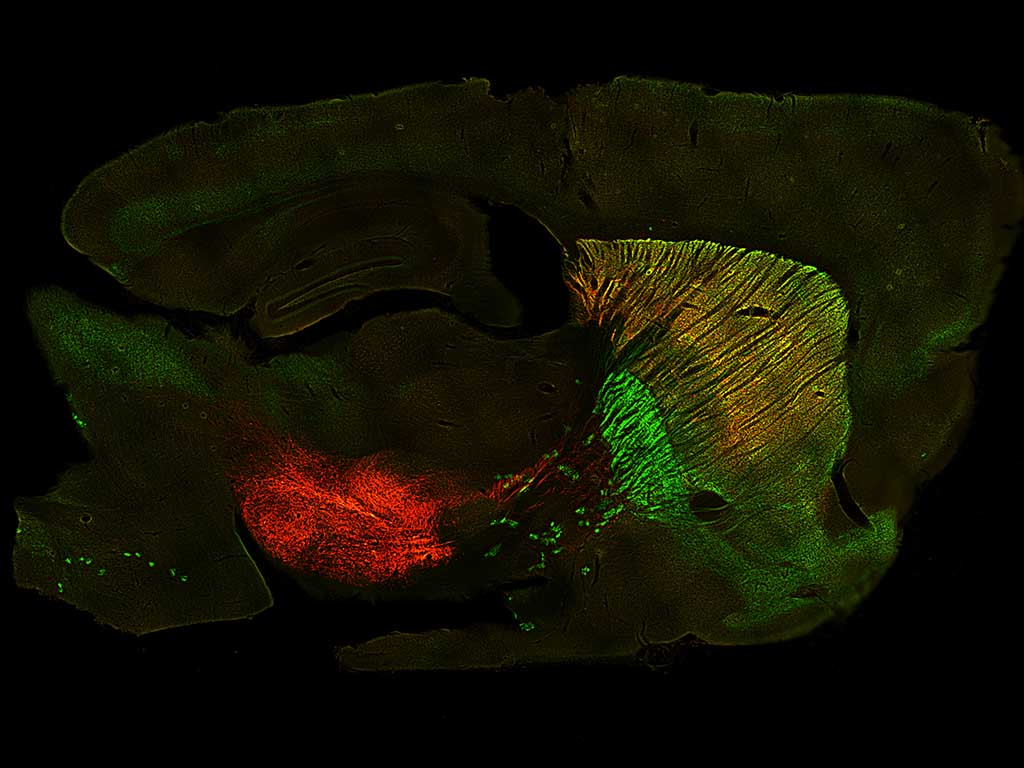Medium spiny neurons activity reveals the discrete segregation of mouse dorsal striatum
Behavioral studies differentiate the rodent dorsal striatum (DS) into lateral and medial regions; however, anatomical evidence suggests that it is a unified structure. To understand striatal dynamics and basal ganglia functions, it is essential to clarify the circuitry that supports this behavioral-based segregation. Here, we show that the mouse DS is made of two non-overlapping functional circuits divided by a boundary. Combining in vivo optopatch-clamp and extracellular recordings of spontaneous and evoked sensory activity, we demonstrate different coupling of lateral and medial striatum to the cortex together with an independent integration of the spontaneous activity, due to particular corticostriatal connectivity and local attributes of each region. Additionally, we show differences in slow and fast oscillations and in the electrophysiological properties between striatonigral and striatopallidal neurons. In summary, these results demonstrate that the rodent DS is segregated in two neuronal circuits, in homology with the caudate and putamen nuclei of primates.

 English
English

